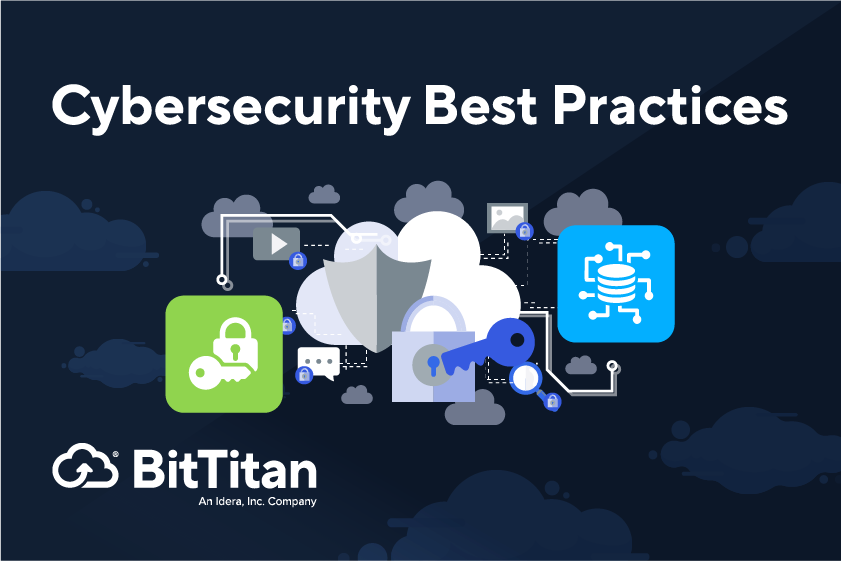Cybersecurity Trends: Taking a Holistic Approach
You probably heard the news: Chinese cyberspies, exploiting a fundamental gap in Microsoft’s cloud, hacked email accounts at the Commerce and State departments. According to reporting by the Washington Post, “The hackers, looking for information useful to the Chinese government, had access to the email accounts for about a month before the issue was discovered and access cut off.” Yep. Somebody was snooping around U.S. government email accounts for a month before being detected. Yet another reminder – if we needed one – that vigilance is vital in defending against cyber-attacks. When you think you’re doing enough, there’s always more that can be done.
Cybersecurity threats continue to evolve, with bad actors engaged in a perpetual mission to exploit network vulnerabilities. Defenses are evolving as well, with new practices being developed alongside new tools, infrastructure designs, and understanding of human behavior. Recently, Gartner published their Top Trends in Cybersecurity; a detailed analysis of nine areas modern cybersecurity teams are focusing on. Three overarching themes emerge: The essential role of people in the success of security programs, implementing security capabilities across the entire digital ecosystem, and restructuring the way the security function operates to enable agility without compromising security.
A key finding that ties these trends together is the imbalance in attention paid to the three areas of cybersecurity controls: people, process, and technology. Security leaders have traditionally leaned heavily on technology to reduce cybersecurity risk. Now there’s increasing recognition that people have immense influence on security and risk outcomes. People throughout the organization need to be aware and involved.
The Human Element
The data continues to indicate that individual users are a prime source of system vulnerability. In fact, Gartner found that 69% of employees they surveyed intentionally bypassed their organization’s cybersecurity guidance in a 12-month period. While nearly all of them knew their actions were increasing risk levels, nearly three out of four employees would bypass a security control if it would help them, or their team, achieve a business objective. To combat these natural human tendencies, cybersecurity teams are evaluating their controls in order to reduce friction, and designing more human-centric solutions. They’re also working with security staff to deliver more empathy-driven, outcomes-focused UX practices.
Of course, it’s easy to say that security teams need to be delivering more. With the ongoing shortage of talent, chances are your team is already stretched pretty thin. Cybersecurity leaders are focusing on attracting, retaining, and upskilling the people they need to maintain a strong security posture. That means partnering with HR to differentiate the employee experience, increase engagement, onboard a more diverse team, and provide clear paths for development and advancement.
The human element in cybersecurity also involves the highest levels of leadership – all the way to the boardroom. A 2022 Gartner survey showed that only half of corporate boards have someone with cybersecurity knowledge or experience. This means reporting needs to be appropriate to the level of technical expertise, and focused on risk management and business outcomes. Painting a clear picture helps board members understand how their decision making on cybersecurity helps the organization meet its overall objectives.
Securing the Entire Ecosystem
As organizations implement security protocols and respond to evolving risks, it’s become clear that real protection means looking beyond the immediate environment. Threats outside the organization, such as supply chains, need to be included under the risk management umbrella. While it’s not realistic to address every threat in an organization’s broader ecosystem, threat management approaches can still be implemented to enhance threat detection and faster response.
Continuous threat exposure management (CTEM) is an emerging practice of systemically optimizing cybersecurity priorities. Organizations implementing CTEM are moving beyond reactive diagnosis and remediation toward proactive exposure assessment. Cybersecurity teams are assessing vendor and supply chain vulnerabilities in order to fix access holes and maintain a more resilient ecosystem.
Cybersecurity validation is another trend that’s being used by organizations to validate how potential attackers would exploit a threat exposure, and how protection systems and processes would react. This approach goes beyond testing control and monitoring tools to assess the readiness of team mobilization, procedures, processes, and decision making.
Restructuring for Agility
The third major cybersecurity trend identified by Gartner consists of restructuring approaches that enable agility without compromising security. These include cybersecurity platform consolidation, transformation of the operating model, and composable security. Organizations are consolidating their security vendors in order to decrease complexity and increase staff efficiency. This allows them to benefit from better integration and access more features with fewer products. It’s important to keep in mind, of course, that consolidation has its own potential risks, including higher pricing.
Transformation of the cybersecurity operating model is being driven by increased decentralization of IT decision making. As technology permeates entire organizations, business lines, corporate functions, and even individual employees are making their own acquisition decisions. This means risk decisions are being made outside of cybersecurity’s purview. Cybersecurity teams need to shift their mindset and support, rather than fight, decentralized decision making. Decision making employees and teams need to have the right tools to understand cybersecurity along with the many risks they’re balancing, including financial, reputational, competitive, and legal risks.
Composable security is an approach where cybersecurity controls are no longer looked at as monolithic systems, but are integrated into the architecture and then applied at a modular level. Essentially, the infrastructure is made up of interchangeable building blocks in order to be more responsive to the accelerating pace of business change.
Migrate to the Security of the Cloud
Yes, a cybersecurity team’s work is never done. But it’s becoming so much more than monitor-and-patch. As these trends show, risk identification, security management, and resilience are enhanced by addressing the interplay of people, processes, and technology.
BitTitan helps organizations move all types of data safely and efficiently so cybersecurity teams can sleep at night knowing their infrastructure is protected by the security of the cloud. Contact us to learn about the benefits of using MigrationWiz to handle your next migration.


